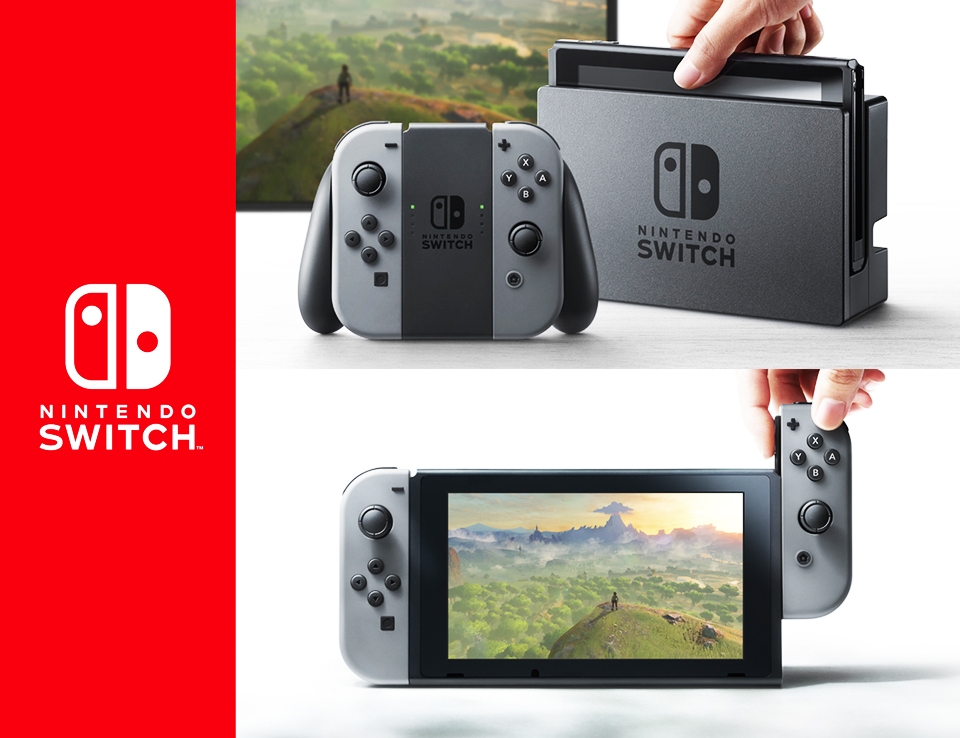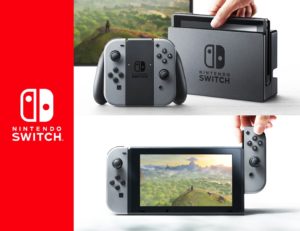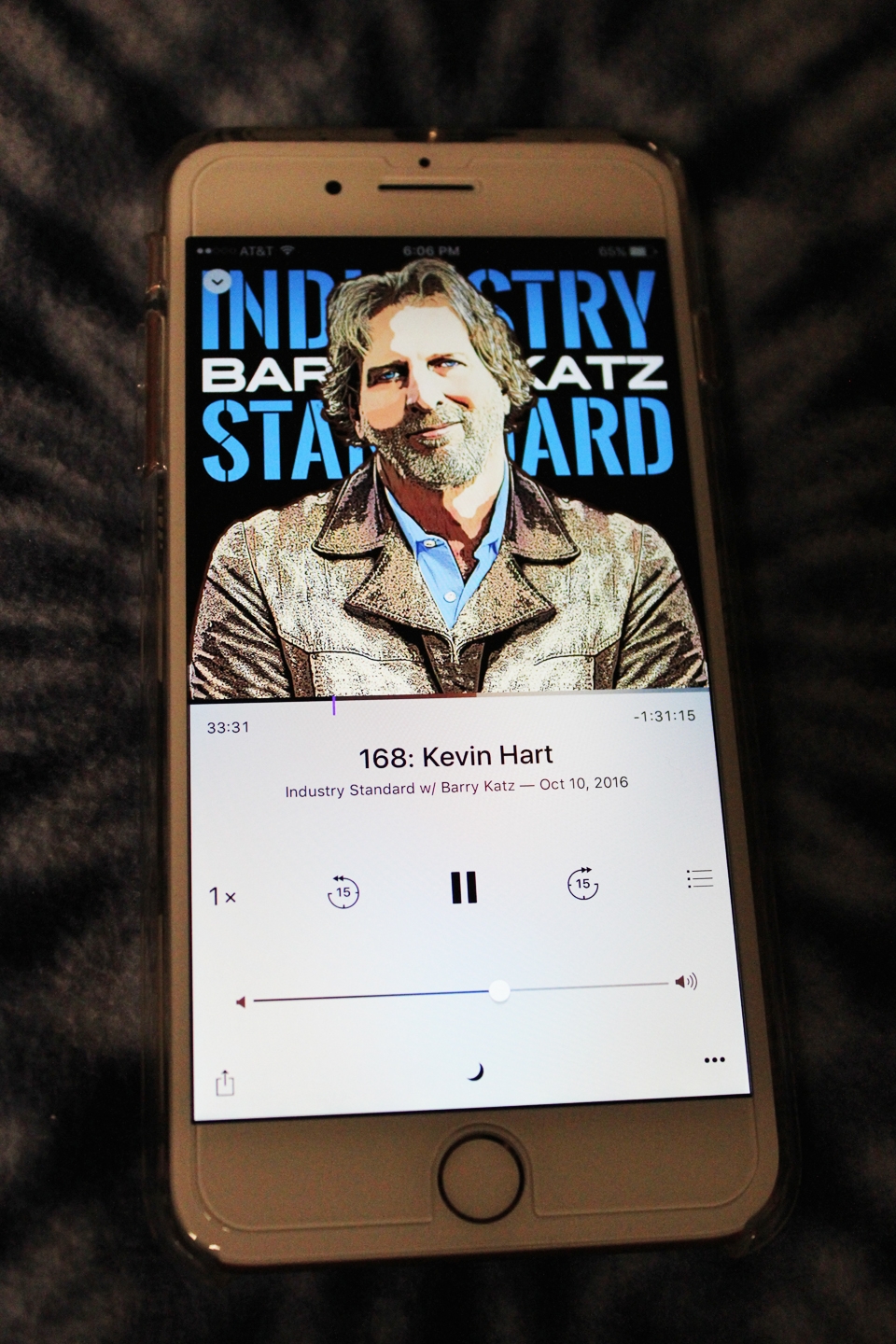

The Switch was known as the Nintendo NX during development. The console allows players to use many controller configurations, with two pictured above.
By Grant Stoner | Staff Writer
Last week, Nintendo unveiled their latest system to the masses, the Nintendo Switch. This new piece of hardware looks to bridge the gap between home entertainment and portability, both hallmarks of Nintendo consoles.
The announcement trailer opens with a young man playing the long-awaited “The Legend of Zelda: Breath of the Wild,” before being interrupted by his energetic dog. Not wanting to disappoint his companion, the man detaches two components of the Switch controller, before placing them onto a tablet screen docked in the console itself. Within seconds, Link’s adventures were no longer being broadcasted onto the television, but rather transferred to the tablet, with the man resuming his quests at the dog park.
To coincide with the removable tablet, Nintendo’s system introduces another element of portability through its cartridge-based games. Similar to the Nintendo 3DS, the Switch operates through cartridges, meaning that gamers have the capability to transfer their libraries with them whenever necessary with ease.
Aside from the portability, the trailer also demonstrated the functionality of the removable controller pieces. Rather than operate on either the tablet or the Switch controller, the remotes have the capability to respond to wireless inputs as well. Similar to a Nintendo Wii controller, players can hold each piece separately, a nice feature, especially if the tablet becomes too bulky. If gamers wish to play cooperatively, the remotes can function as individual controllers, and the tablet will divide its screen for multiplayer games.
In order to effectively distribute power between the television and the tablet, the Nintendo Switch will utilize a custom-built Nvidia processor. According to reports from Euro Gamer, the Tegra X1 chip will allow the Nintendo Switch to seamlessly transition between the two screens, while allowing developers to produce quality content. Although not as powerful as the Xbox One or PlayStation 4, Nintendo’s newest creation will still be able to run the newest games.
Naturally, with a brand-new console comes a plethora of exciting titles. To coincide with the latest Legend of Zelda, the Nintendo Switch trailer showcased a never-before-seen “Super Mario,” “Mario Kart,” “Splatoon” and even a brief demonstration of “The Elder Scrolls V: Skyrim Special Edition.” Though, after the initial reveal, Bethesda Softworks quickly published a statement stating that there are currently no games in production for the system, yet they are partnering with Nintendo for possible future releases.
Along with Bethesda Softworks, Nintendo has also partnered with multiple third-party publishers, making the Nintendo Switch more appealing than its predecessor, the Wii U. Capcom, FromSoftware, Ubisoft, Electronic Arts, Telltale Games and roughly 40 other studios have displayed interest in the newest system, yet whether or not they will actually produce games for the Switch remains to be seen.
Despite the financial failures of the Wii U, Nintendo’s newest foray into the console market is intriguing. No company has yet to successfully create a blend between home entertainment and portability, making the Nintendo Switch the first of its kind. However, until gamers can get their hands on the Switch, only time will tell if Nintendo’s newest idea will be a hit.
The Nintendo Switch will launch in March 2017.



